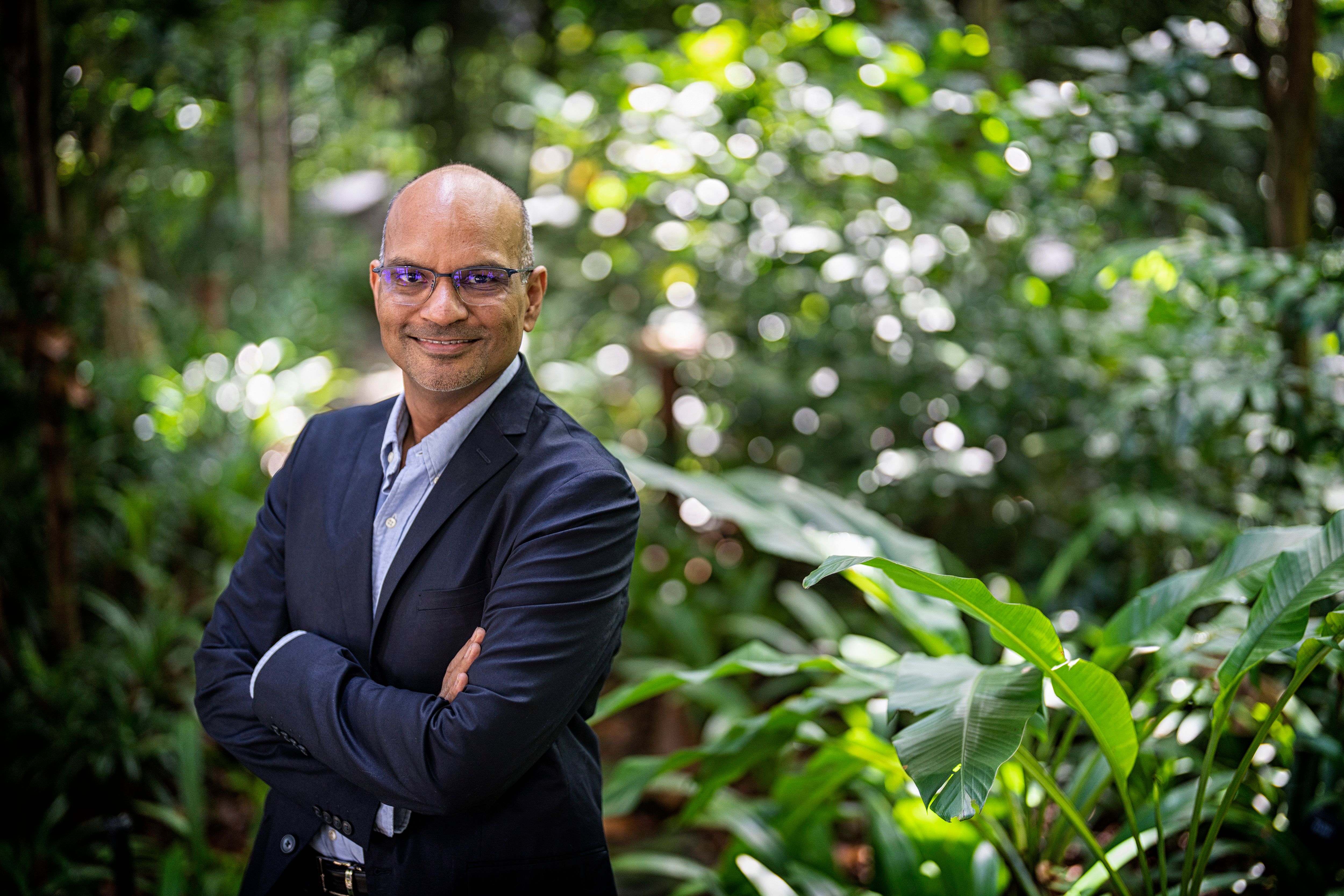How cloud services can enable a 5G-driven future
By Oracle
Yogesh Sokhal, Senior Vice President of cloud service provider Oracle tells GovInsider how cloud can allow telecommunications operators to make full use of 5G networks as the high-speed cellular network goes mainstream in Southeast Asia.

Yogesh Sokhal, Senior Vice President of Oracle. Image: Oracle
In July 2022, Singapore-based telecommunications company, Singtel, announced it had achieved over 95 per cent of standalone nationwide 5G coverage, three years ahead of its 2025 target. This makes the island state the first country in the world to be covered by standalone 5G.
Other Southeast Asian states are not far behind. Thailand, for instance, will have its 5G network coverage reach 76 per cent of its population by the end of this year, while Vietnam is beginning 5G trials across various speed bands, revealed a report by global mobile operator association GSMA.
Although the Covid-19 pandemic slowed 5G rollouts, Southeast Asia is well on track, says Yogesh Sokhal, Senior Vice President of cloud service provider Oracle. GovInsider sits down with Sokhal to understand the opportunities and trends 5G presents for Singapore and the region, and how cloud technology can help make full use of these networks.
An integral component of end-to-end business solutions
As opposed to cloud-enabled solutions that were retrofitted and remarketed as cloud products, cloud-native solutions are intentionally designed for the cloud. Cloud-native 5G networks can fully exploit the interoperability of cloud computing models, such as edge computing and massive IoT.
In Singapore, hundreds of sites are already connected to cloud-native 5G networks, while mobile penetration has been over 100 per cent for some time, says Sokhal. Therefore, as one of the most highly connected cities in the world, the opportunities lie in novel business models and ways of working.
“In order to realise the full potential of 5G – and to do it profitably – Communication Service Providers (CSPs) must look to the enterprise and government sectors. This involves a shift from viewing 5G as a technology solution, to viewing it as an integral component of end-to-end business solutions,” says Sokhal.
This means that CSPs must first realise their own 5G-led potential, he adds. With strategic partnerships in place, this will enable CSPs to position Singapore as a regional 5G and communications leader. In 2021, for example, Singtel partnered with 5G network provider Ericsson to accelerate 5G adoption and trial 5G innovations across industries like maritime, financial services, and aerospace, among many others.
But for this to happen, there are three big gaps that need to be addressed, according to Sokhal .
The first is security, particularly for 5G networks and applications. A 2021 AT&T survey conducted on 1,000 security practitioners globally found that only 9 per cent of respondents were confident that their security posture was ready for 5G.
The main security gaps in 5G networks lie in the carryover security problems when transitioning from previous-generation networks, and the risks and costs associated with provisioning 5G equipment. With traditional security check points based on centralised hardware now being replaced with an ethereal cloud of software-defined digital routers, monitoring also becomes harder for 5G networks with decentralised security.
Industry associations such as GSMA have begun to set up 5G cybersecurity knowledge bases that are freely available to its members. This includes lessons learnt from vulnerabilities in 4G, advisories on how industries can comply with security regulations, and on how to secure systems that are connected to the 5G network.
The second is making sure there is a continual practice of updating and refinement for business models, processes, and data analytics. This will ensure that organisations take full advantage of new possibilities created by advances in the 5G space and beyond, says Sokhal.
The final bridge to cross is opening up the communications industry. “We need to pivot it from a closed ecosystem to an open one that empower all participants to drive service innovation around the consumer,” he says.
A cloud-enabled 5G future
Having worked with telecommunications operators across the globe for decades, Oracle enables these operators to build new applications or modernise existing workloads using over 80 cloud services. These range from data management and developer services to analytics and AI.
“We understand the challenges operators now face as the data and consumer landscape changes. With our cloud, we give telcos the ability to boost their agility, reduce capital expenditures, and create new revenue streams through building and serving innovative new applications,” says Sokhal.
For instance, Oracle is working closely with India-based telecommunications provider, Bharti Airtel, to bring a range of cloud solutions to more than 1 million enterprise customers.
For one, Oracle and Airtel will jointly set up a Cloud Centre of Excellence, educating a team of specialists from both organisations to enable Airtel’s customer base to fully benefit from cloud solutions. Oracle will also support Airtel’s regional expansion of Nxtra, India’s largest data centre network. This expansion will enable more stakeholders to co-innovate cloud solutions, supporting the growth of India’s digital economy.
In Singapore, Oracle has extended its partnerships with local operators like AT&T and Vodafone to accelerate cloud transition, allowing them to improve processes both internally and externally. For example, services such as the Oracle Cloud ERP will help organisations eliminate obsolete manual processes and engage customers with personalised content to improve user experience.
5G is expected to contribute to $2.2 trillion in economic growth by 2034, and Sokhal foresees Singapore taking a significant slice of that pie. Moving forward, Oracle’s cloud solutions will continue to adapt and evolve to serve the needs of its end users, as business decisions go from regional to local.
“5G’s ability to support massive machine-type communications makes it ideal for realising all the game-changing technological visions we have been hearing about for years, like IoT, Virtual Reality, and smart factories. As the regional leader in 5G and communications, Singapore will play a huge role in this transformation,” he says.
Also read: What's next in the world of wireless?
